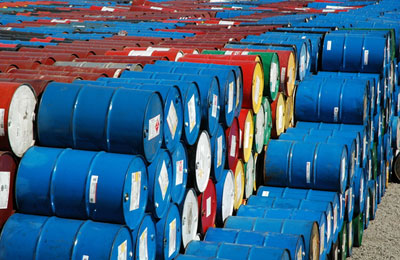
Iran's Q1 fuel oil exports ‘up 12pc over Q4’
Singapore, April 10, 2013
Iran exported nearly 18 million barrels of fuel oil in the first quarter, or around 200,000 barrels per day, an increase of nearly 12.5 percent from the previous quarter, according to traders and data from Thomson Reuters Oil Analytics.
The figures show that Iran's fuel oil exports remain healthy despite tougher Western sanctions aimed at restraining the country's nuclear ambitions, although the measures have more than halved its exports of crude oil over the past year.
Iran's market-savvy officials and Gulf-based middlemen have adopted creative strategies to get around the sanctions, from using ship-to-ship transfers, to discharging and loading at remote ports and blending Iran's fuel oil with other fuels to hide its origin.
Sales of fuel oil through direct sales agreements between the National Iranian Oil Company (NIOC) and buyers were pegged at 7.8 million barrels, according to at least one Iran-based shipping source familiar with the country's fuel oil exports.
Average monthly exports through direct sales between January and March were 2.6 million barrels, or 86,666 barrels per day (bpd), with exports despatched from the country's largest oil export terminal at Kharg Island, the source said.
"We are seeing roughly steady shipments from Kharg Island monthly, it's done in 2 or 3 shipments," said the Tehran-based source, who declined to be identified due to the sensitivity of the Iran oil export data.
Iran's first-quarter total exports of fuel oil rose around 74 percent from the corresponding period in the previous year and were up nearly 79 percent over the same quarter in 2011, Reuters data showed.
According to Thomson Reuters Oil Analytics, Iran's total fuel oil exports were 9.8 million barrels, or 108,888 bpd, in the first quarter of 2011 versus the 17.55 million barrels in the same quarter this year.
INDIRECT SALES
First-quarter indirect sales of Iranian fuel oil, which is oil resold to independent trading companies based outside Iran, totalled about 9.75 million barrels.
Exports were carried out mostly through ship-to-ship (STS) transfers just inside international waters, the source said.
"NIOC fills up the large supertankers at Kharg Island, and once they are fully laden, they move into international waters for the transfer operations," said one shipping source familiar with the operations.
"There is no way of tracking these ships, their radars are turned off, and the daughter vessel is usually an old junk."
Most Iranian cargoes were destined for Singapore, Asia's largest trading and blending hub, and Fujairah in the United Arab Emirates (UAE), one of the world's top bunkering hubs.
Such sales are supported by tankers assigned specifically to shuttle into export terminals such as Bandar Abbas and Bandar Mahshahr to load the oil and then re-export it via ship-to-ship transfers outside the port of Fujairah in the United Arab Emirates (UAE), sources said.
Some cargoes were bought by Middle East traders involved in marine fuel sales and the rest was sold to buyers in Southeast Asia and North Asia, traders familiar with the purchases said.
"Redocumentation of the cargoes takes place throughout the supply flow chain, and by the time it gets to the discharge port, the origin of the oil is untraceable," a trader said.
"Along the way some blending takes place and the molecules change, so the structure of the oil gets altered and it becomes harder for anyone to really say definitively that this oil came from Iran." – Reuters







